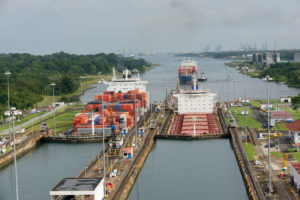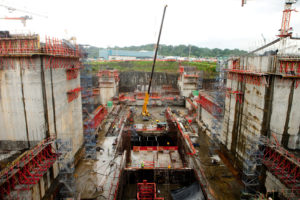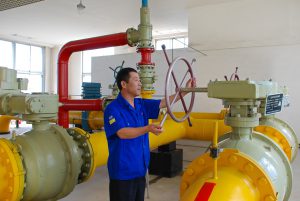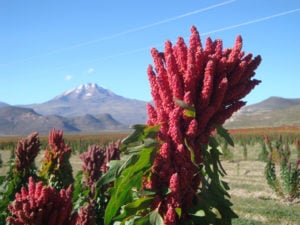In just a decade, trade between China and Latin America has multiplied more than 20 times as regional partners have signed hundreds of agreements and broken ground on dozens of key energy, transport and infrastructure projects in strategic locations.
The rapid commercial expansion means China now sees Latin America as a “natural extension” of its Belt and Road connectivity initiative (BRI), which originally encompassed Europe and Asia when launched in 2013, but which 18 countries in the region have now endorsed.
The project, which will hold its second international forum in China this week, is promoted as the revival of the ancient Silk Road and maritime trade routes. President Xi Jinping’s signature foreign policy initiative’s stated objective is to broaden economic, political and cultural cooperation between the countries and regions that back it.
Did you know…?
Panama was the first Latin American country to sign a Belt & Road agreement
Sebastián Piñera, president of Chile, which recently signed a BRI agreement with China, will attend the forum, along with a number of Latin American foreign ministers.
“Unlike the US, China is the actor that today embodies globalisation and free trade. Its main objective is global economic integration and that is why everyone is invited to participate,” said Dafne Esteso, a researcher at the Latin American Center for the Political and Economic Study of China.
BRI claims to offer a global network of infrastructure projects in Asia, Africa, Europe and the Americas – mainly to facilitate trade – whilst bringing the promise of Chinese investment and economic development for partner nations.
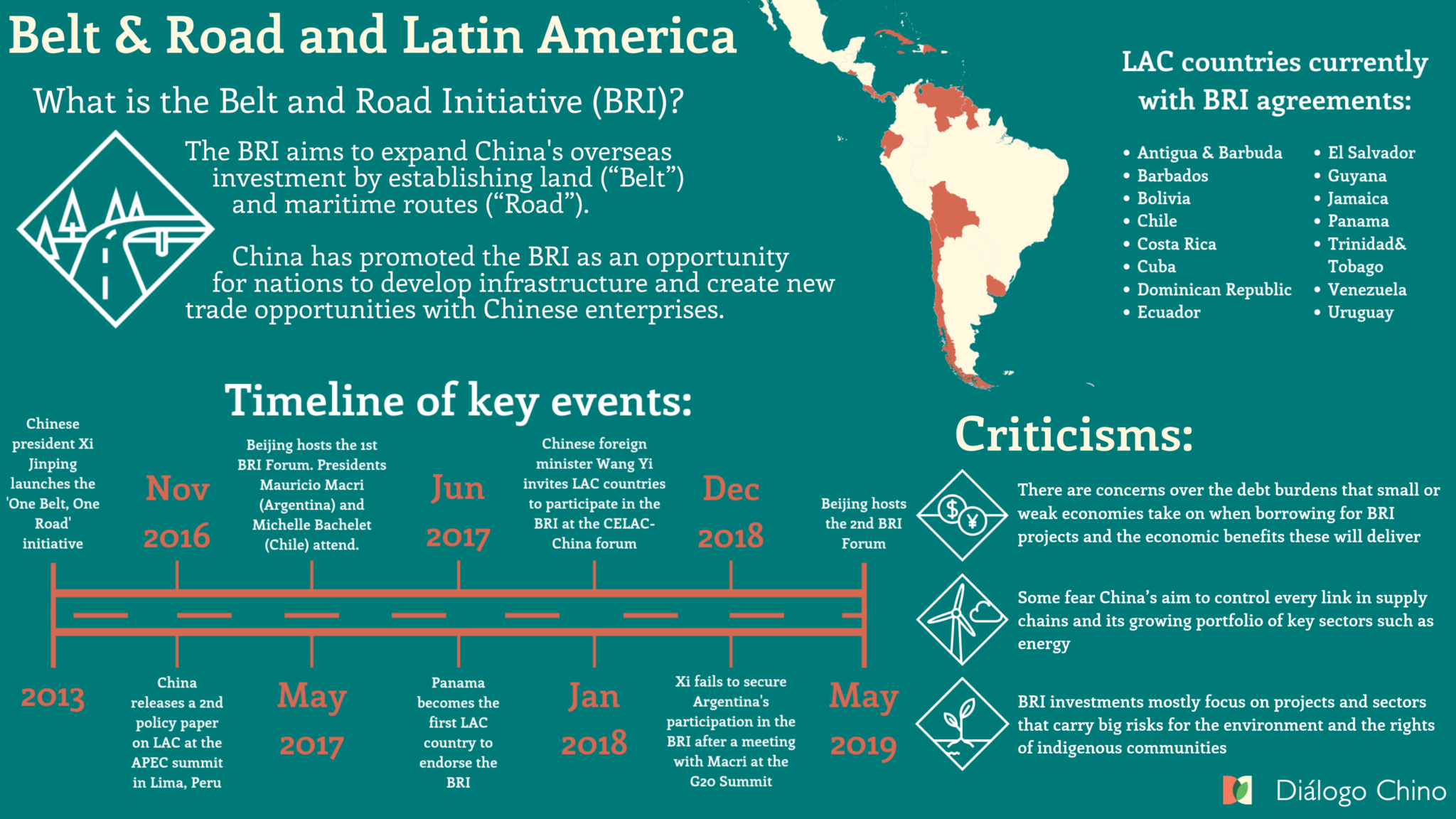
BRI reaches Latin America
In the last five years, BRI has expanded its scope and now includes several regions, including Latin America. Panama was the first country in the region to sign a cooperation agreement under the BRI banner after establishing diplomatic relations with China in 2017.
It’s China’s way of giving order and consistency to its foreign policy. It represents its strategy towards the world
A number of other countries including Chile, Ecuador, Antigua and Barbuda, the Dominican Republic and, most recently, Jamaica, have followed.
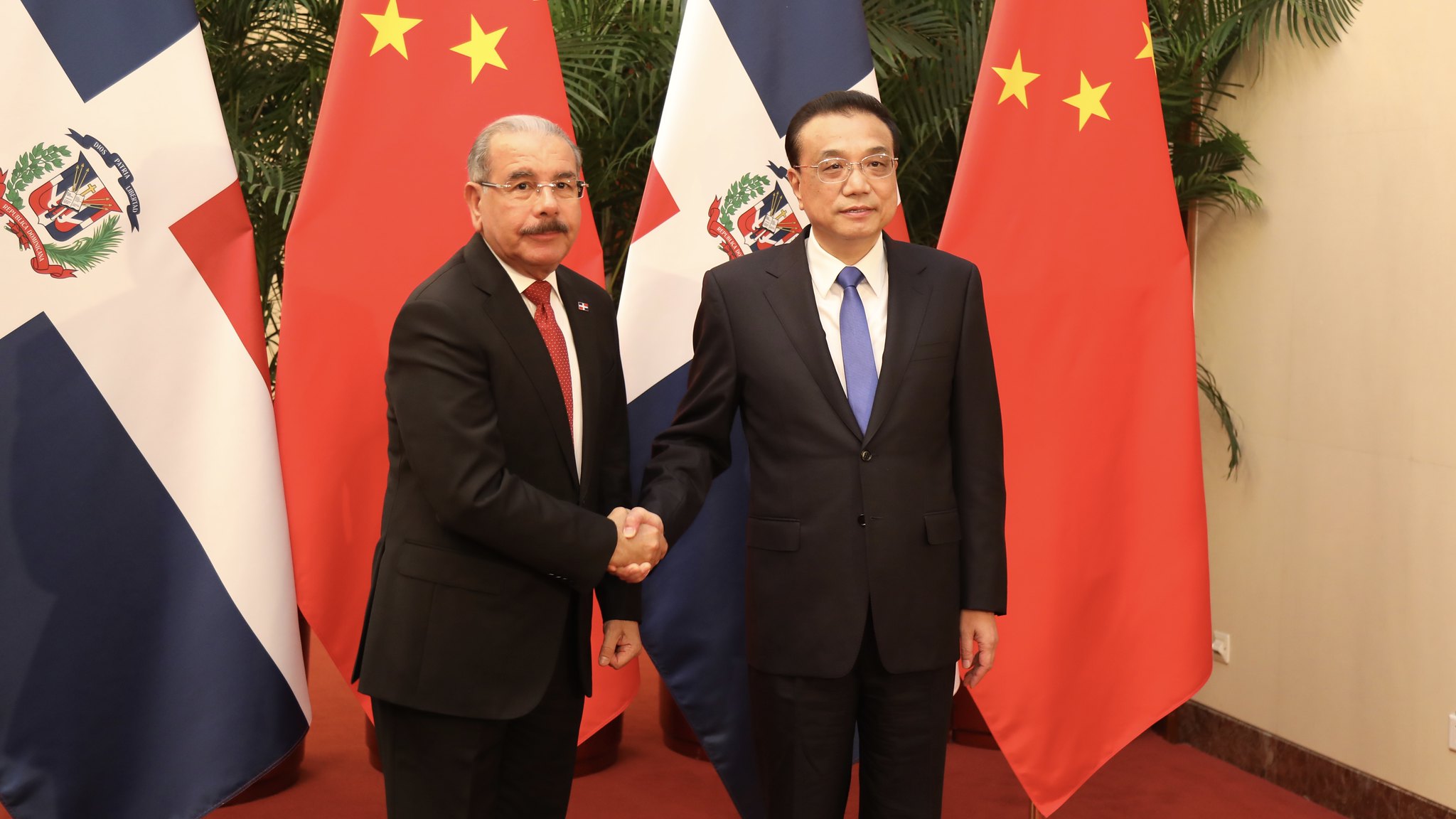
Yet, as countries in the region make official declarations in support of BRI, what it actually means to “join” or be a part of the initiative has been a topic of some confusion.
“It’s China’s way of giving order and consistency to its foreign policy. It represents its strategy towards the world,” said Ricardo Barrios, researcher at the Inter-American Dialogue’s Asia and Latin America program. “For China, Latin America is an indispensable participant of the Belt and Road.”
During the II Ministerial Meeting of the China-Community of Latin American and Caribbean States (CELAC) Forum, held in January 2018 in Santiago, Chile, the group approved a special declaration on the BRI. The move signalled a diplomatic victory for China in the region.
It was one thing when it was limited to Europe and Asia, now that it includes Latin America it is different
However, challenges for China’s foreign policy in Latin America remain. The largest economies – Argentina, Brazil and Mexico – have not yet signed any BRI agreements, which the Chinese government will find “annoying”, according to Barrios.
“Chile is the only one of the biggest economies that has signed,” said Barrios. The reason, he added, is that the US has discouraged Latin American countries from cooperating more closely with China, claiming it is not transparent about its loans and saddles recipients with unmanageable debt.
“It was one thing when it was limited to Europe and Asia, now that it includes Latin America it is different,” Barrios said about US concerns over BRI.
In search of finance
Latin American countries that have already signed BRI agreements hope it will bring finance for energy, roads and ports, among other benefits. However, countries such as Venezuela and Ecuador have borrowed heavily from China and, mired in economic troubles, serve as cautions to others.
China also seems to be wary about lending endlessly to Latin America. China’s state-run policy banks have lent the region US $140 billion since 2005, according to the Inter-American Dialogue and Boston University. However, funds have fallen consecutively over the past three years.
Over the next 20 years, Latin America will invest US$2 trillion in transportation and energy, according to the Inter-American Development Bank. The region expects that China will continue to invest through BRI.
“The economic power of China has to do with its financing capacity and the prominence of its companies, which are gaining a lot of experience in Latin America,” said Sergio Cesarín, coordinator of the Center for Asia Pacific Studies and India at the Tres de Febrero University (UNTREF).
“China’s link to the region will be strengthened within the framework of this project,” he added.
1.8million
the estimated number of jobs in Latin America generated by Chinese trade and investment
China is currently the second largest trading partner and the third largest investor in Latin America. Researchers estimate that in the last decade more than 2,000 Chinese companies have settled in the region, generated more than 1.8 million local jobs.
However, today Latin America has a trade deficit with China of more than US$60 billion. Soybeans, metals and minerals and hydrocarbons make up 70% of the region’s exports, meaning, the relationship is an uneven one.
Social and environmental concerns
While Brazil, Argentina, for example, have not signed BRI agreements, both have comprehensive bilateral cooperation agreements with China and host major Chinese infrastructure projects. This raises questions about which can be classified as BRI projects amid concerns the initiative is supporting environmentally degrading projects.
Given the confusion, Xi has said he will clarify the initiative’s scope.
“There are still no criteria for the projects of the Belt and Road, but China is considering it. Being the main host, a lot of the weight falls on China to explicitly set certain standards,” Barrios said.
Non-governmental organisations have questioned various Chinese projects in Latin America for violating human rights and non-compliance with environmental standards.
A clearer definition of the BRI offers an opportunity to include environmental sustainability and human rights standards in its projects. For the UN’s Economic Commission for Latin America and the Caribbean (ECLAC), this is an opportunity that shouldn’t be missed.
Alicia Bárcena, ECLAC’s executive secretary, said:
“The Belt and Road can attract investments in infrastructure, industry and services in Latin America and the Caribbean, giving an economic boost to the region based on environmental sustainability.”


